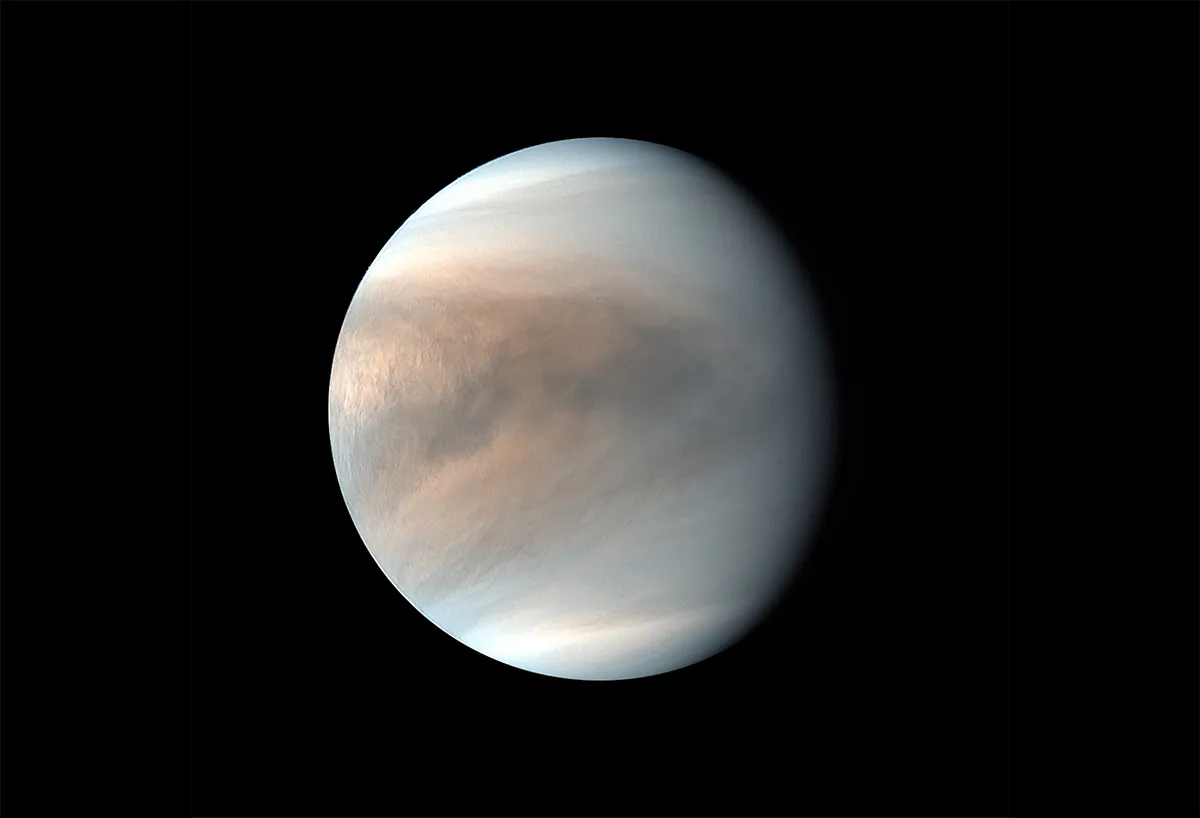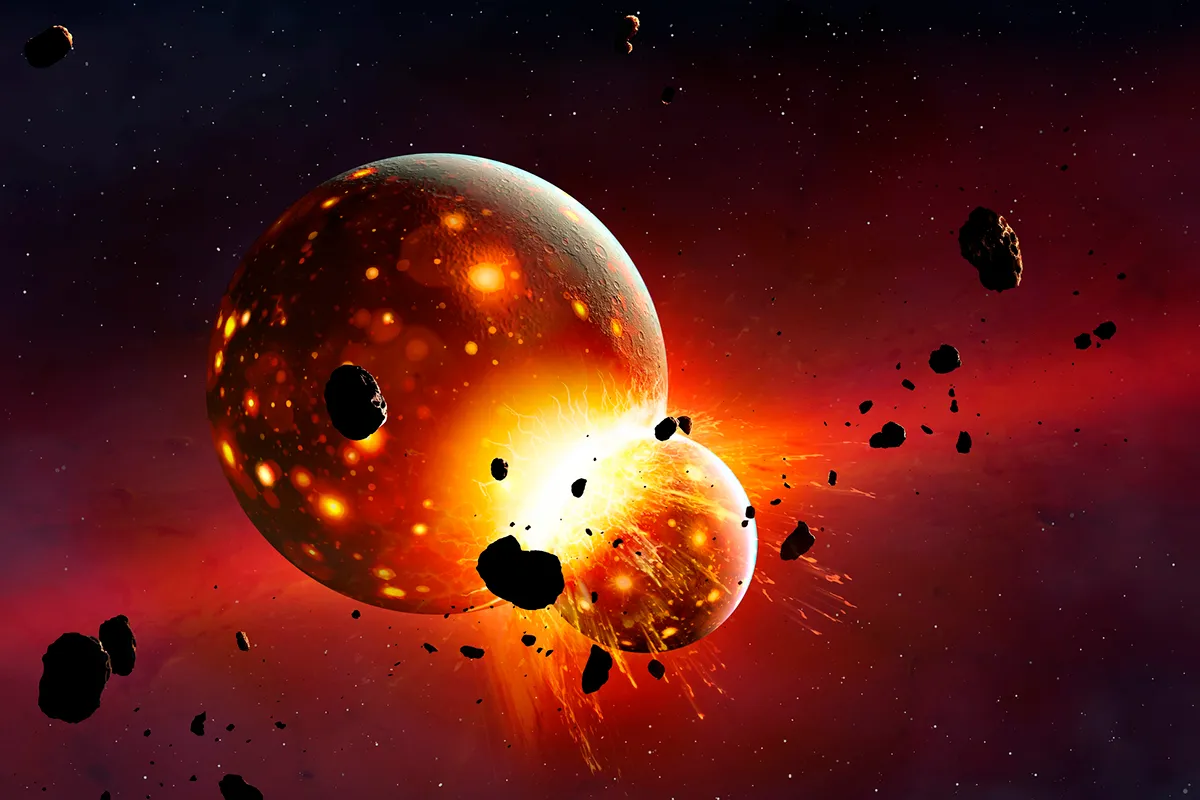The second planet from the Sun, Venus, spins backwards compared to the other planets in our Solar System. Why?
At school we all learn that Earth is just one of the many worlds in our Solar System: an individual body among the numerous planets and moons orbiting our host star the Sun.
Astronomers think the planets of the Solar System developed from a collapsing cloud of gas called the Solar Nebula.
Eventually the collapsing nebula flattened into a spinning protoplanetary disc of cosmic material out of which the planets formed.
So if all the planets came out of the same spinning matter, why is it that Venus spins the backwards compared to the rest?

Imagine swinging a bag of balls of different sizes vigorously in a circular motion and then releasing them.
You would find the angular momentum caused them all to rotate in the same direction so, in theory, all the planets should too.
Venus struck by giant asteroid
But the Solar System is a cluttered place with lots of high-speed objects, such as comets and asteroids, that can potentially collide with planets.
We know that large asteroids have hit Earth during its history (one of the theories as to how the Moon formed), so it seems plausible that, during the early stages of the Solar System, Venus could have been hit by a celestial object similar in size to itself that means it spins backwards.

If this collision also altered Venus’s orbit, the presence of the Sun, Mercury and Earth would have pulled its orbit back to its original position.
The only lasting effect would be on the direction it spins about its axis.
Astronomers also think a collision on Uranus is responsible for the planet spinning on its side.
Venus is certainly considered very odd for spinning in the opposite direction to most other planets, but the strangeness of Venus doesn’t end there.
The planet rotates incredibly slowly, with the Venusian day equivalent to 243 Earth days, which is longer than the Venusian year of 225 Earth days.
This article originally appeared in the January 2007 issue of BBC Sky at Night Magazine.

